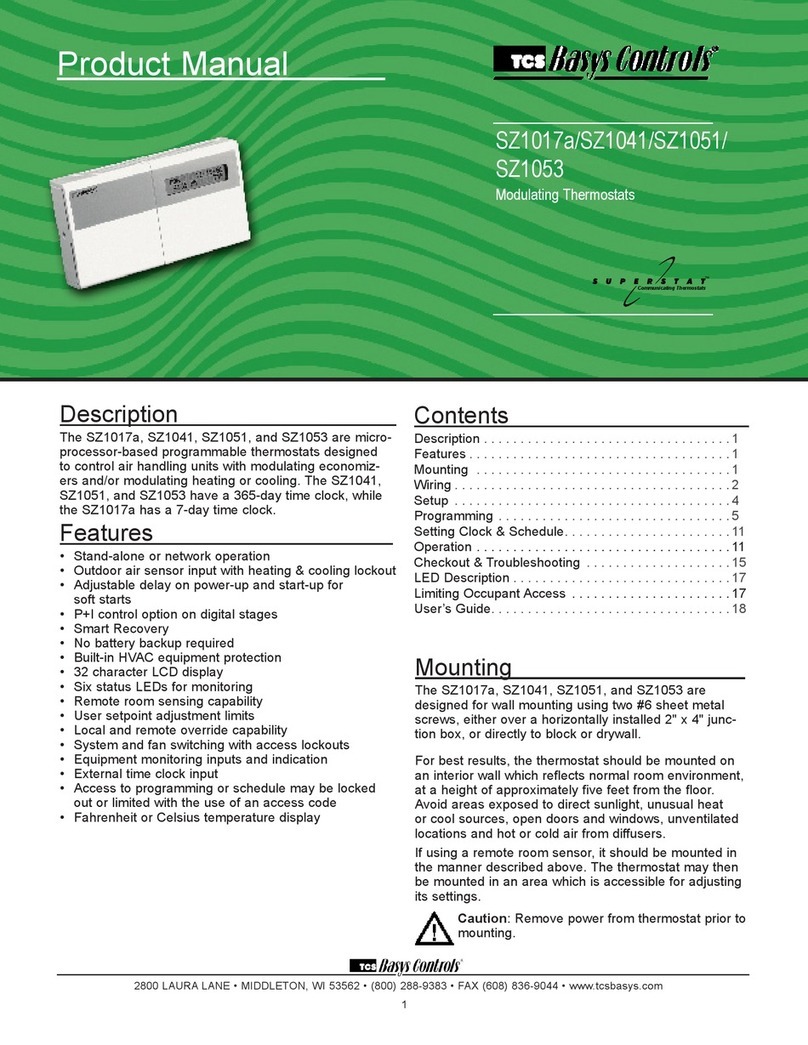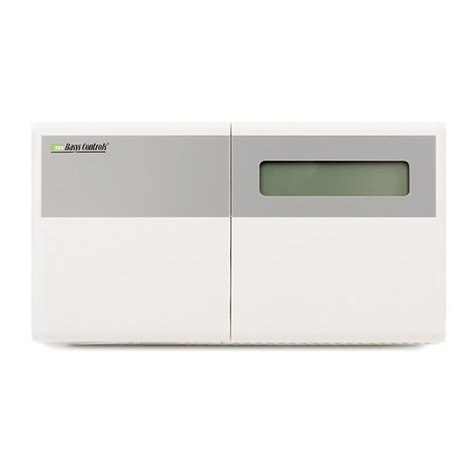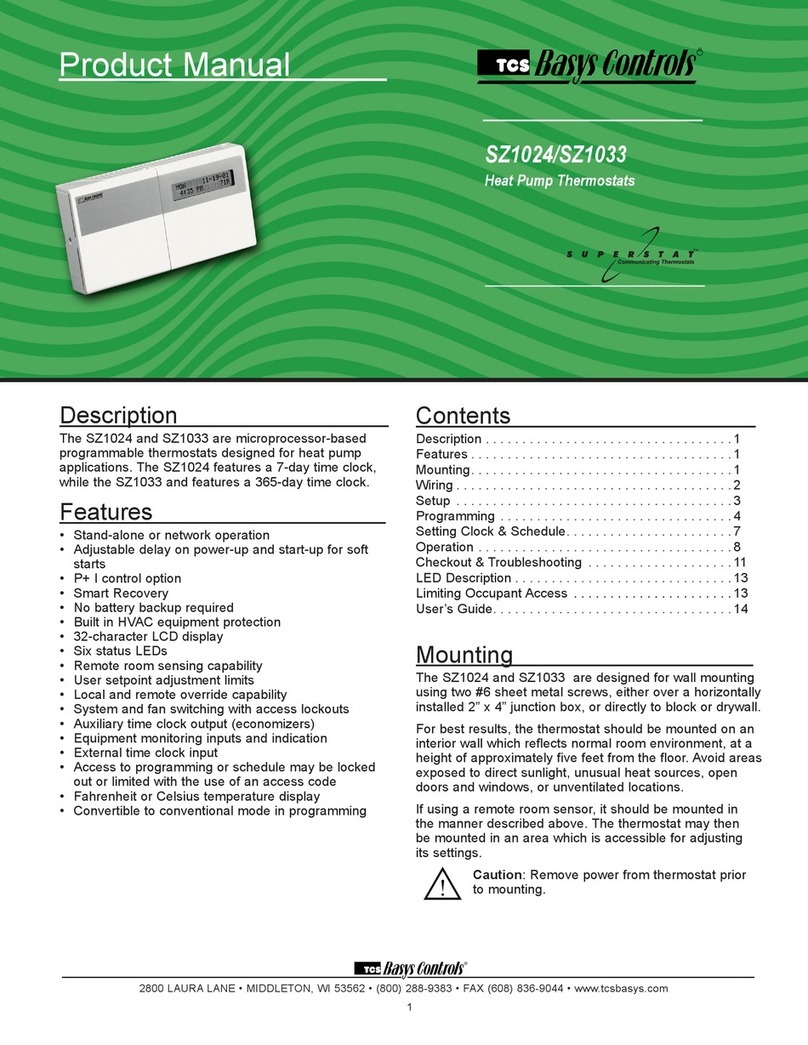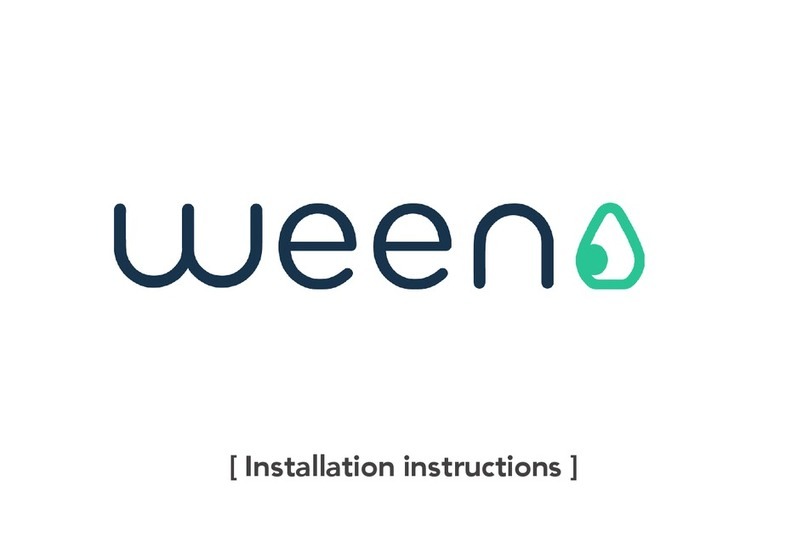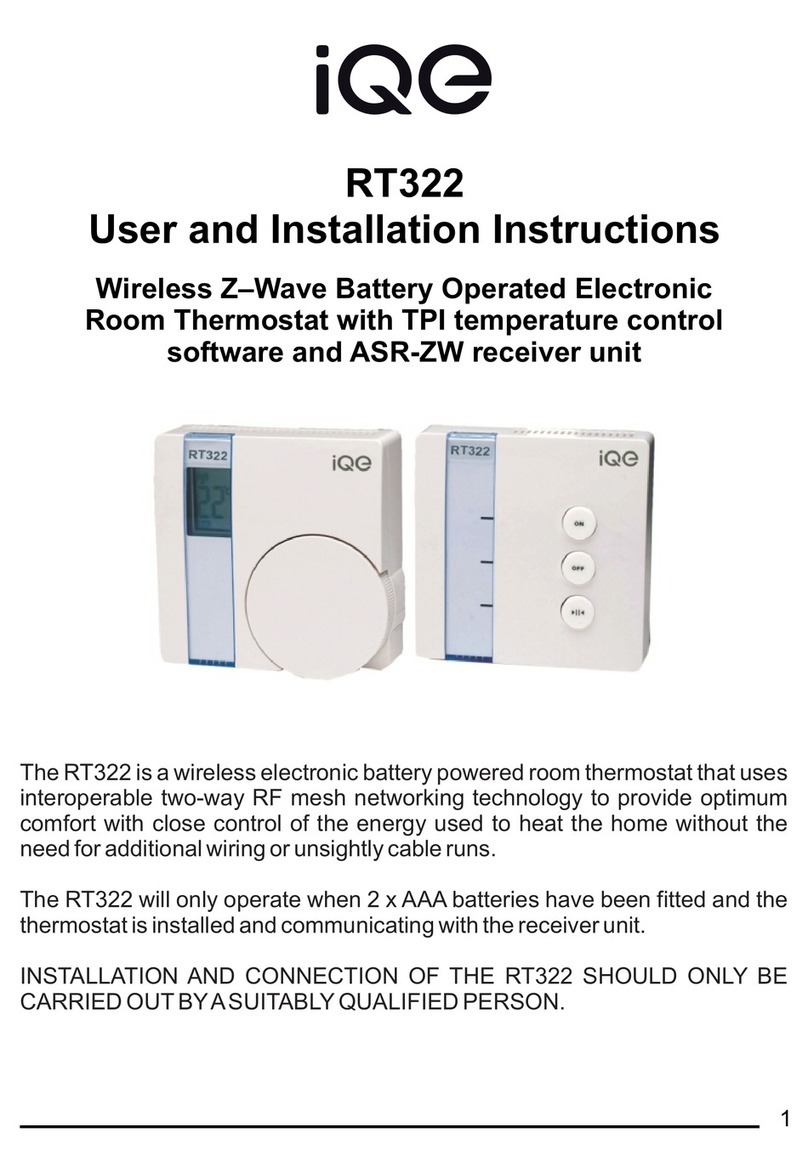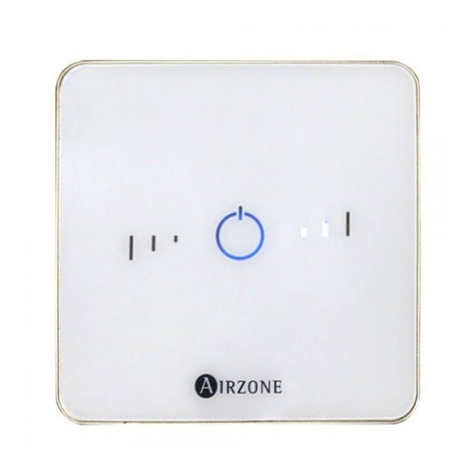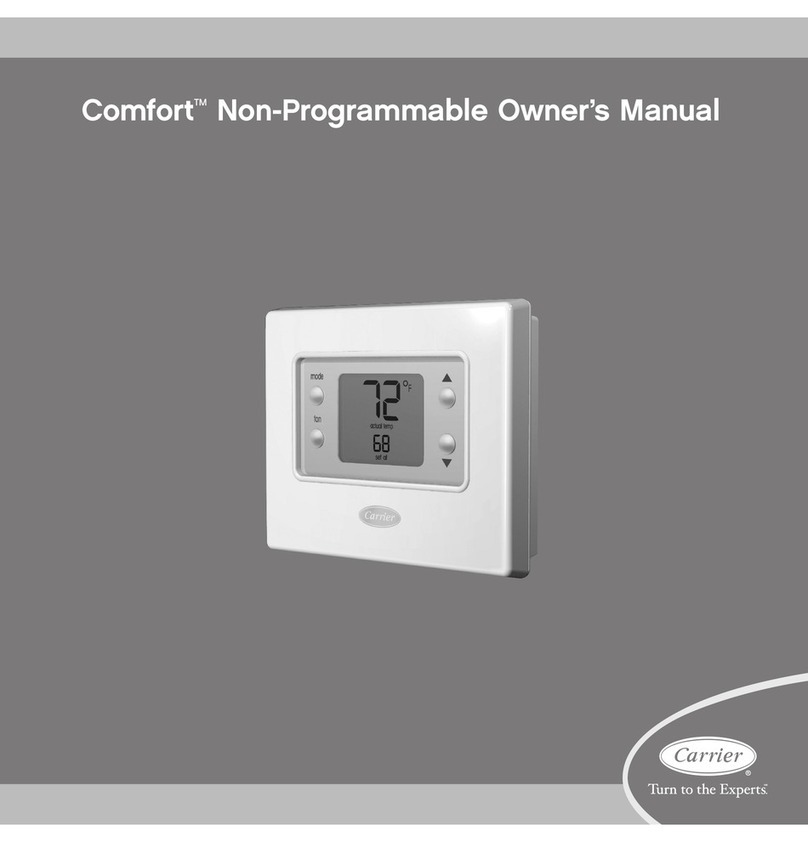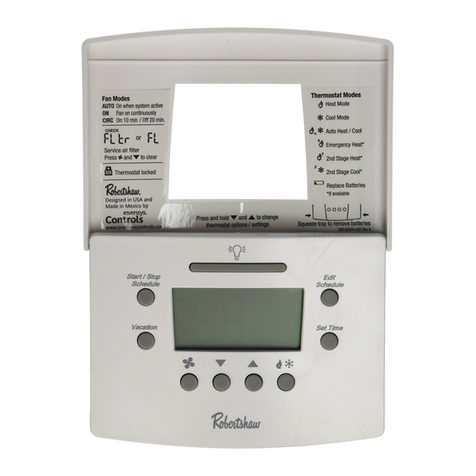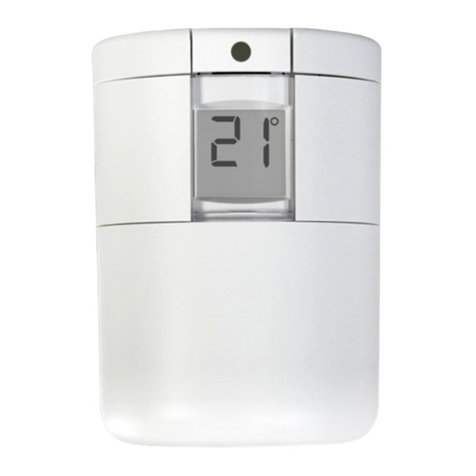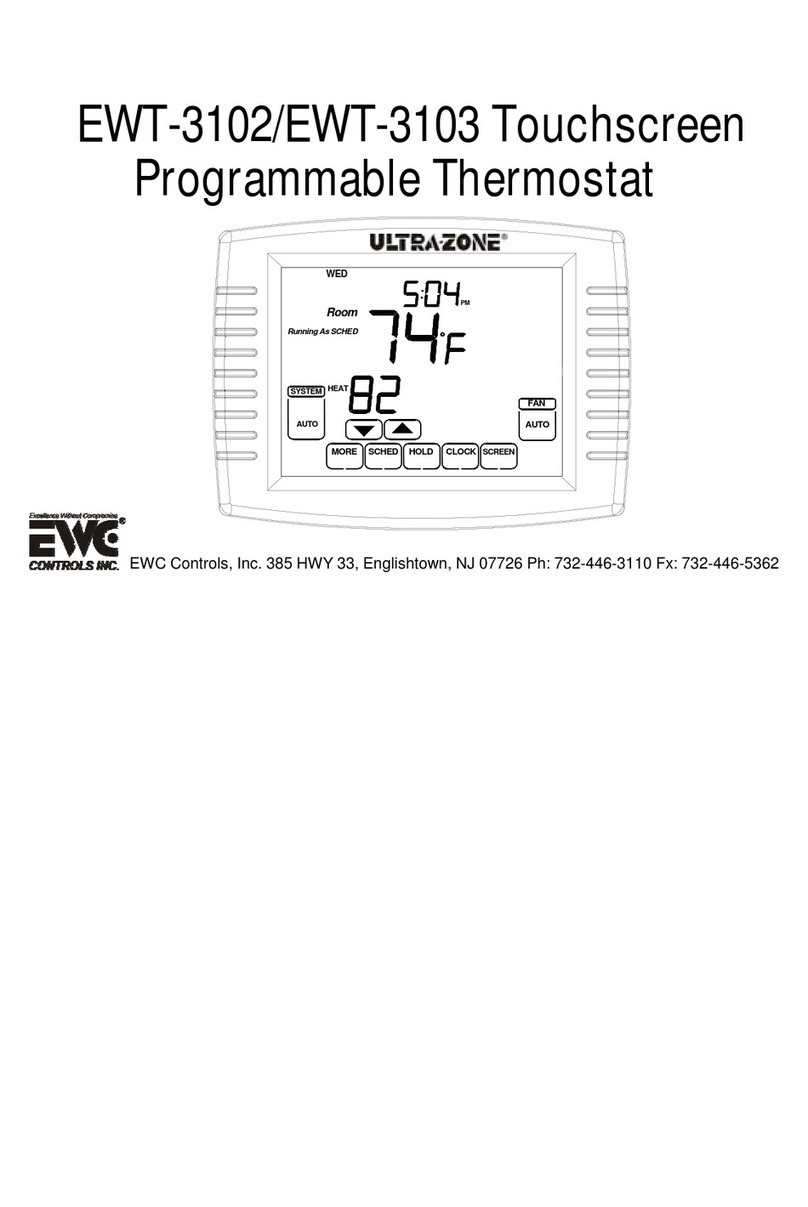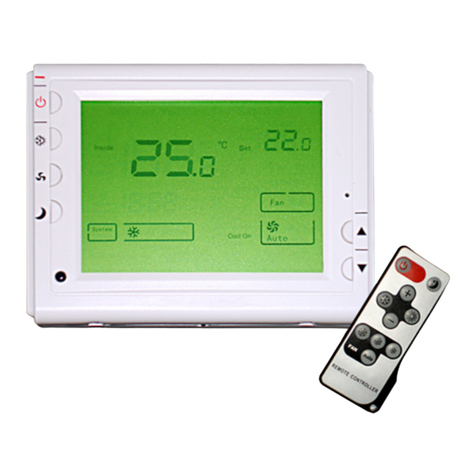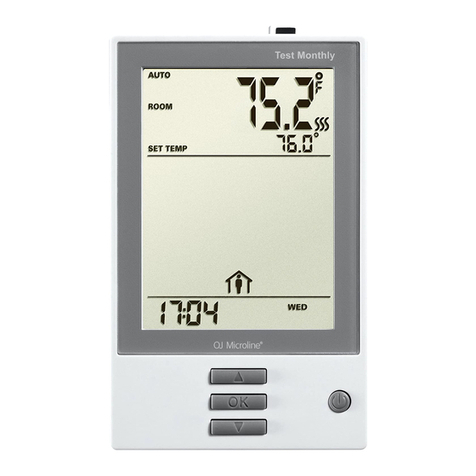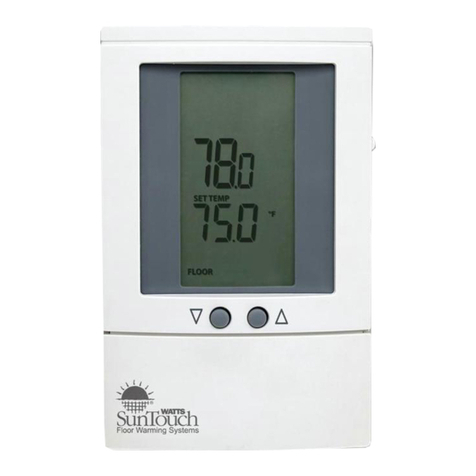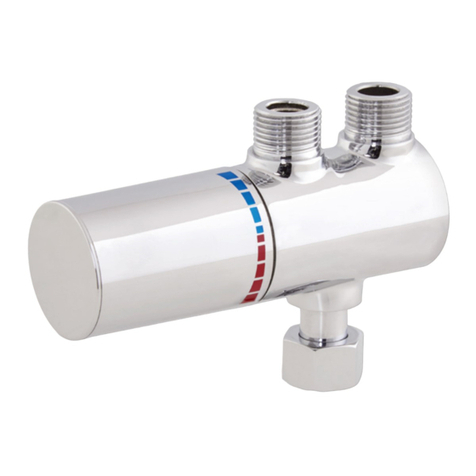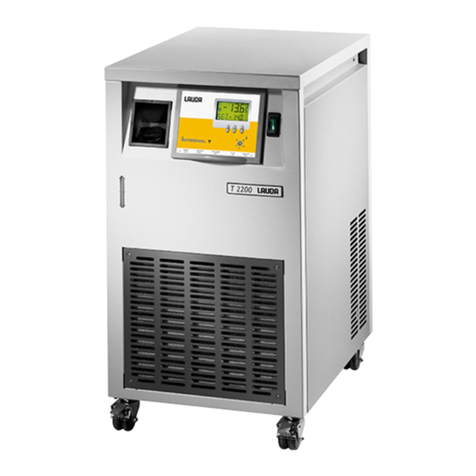TCS Basys Controls Superzone SZ1018 User manual

Description
The SZ1018 are specifically designed for the Superzone
Commercial Zoning System (Superzone CZS). The
SZ1018 have a 7-day time clock and is designed for
applications with modulating zone damper and reheat or
peripheral heat.
Features
• Stand-alone or network operation
• 7-day time clock
• Discharge air sensor input with high and low limits and reset
• Outdoor air sensor input with heating & cooling lockout
• Offers up to two stages for heating and/or cooling and the outputs for
zone damper and reheat
• Adjustable delay on powerup for soft starts
• P+I control option
• Smart Recovery
• No backup battery required
• Built-in HVAC equipment protection
• 32 character LCD display
• Six LEDs for status monitoring
• Remote room sensing capability
• User setpoint adjustment limits
• Local and remote override capability
• System and fan switching with access lockouts
• Fan interlock safety option
• Filter service input and indication
• Equipment monitoring inputs and indication
• External time clock input
• Energy management input for setpoint shift
• Access to programming or schedule may be locked out or limited
with the use of an access code
• Fahrenheit or Celsius temperature display
• Digital or analog changeover
Product Manual
Contents
Description . . . . . . . . . . . . . . . . . . . . . . . . . . . . . . . . . . 1
Features ....................................1
Mounting....................................1
Wiring ......................................2
Setup ......................................3
Programming ................................4
Setting Clock & Schedule.......................7
Operation ...................................8
Checkout & Troubleshooting ....................10
LED Description ..............................12
Limiting Occupant Access ......................12
User’s Guide.................................12
Mounting
The SZ1018 are designed for wall mounting using two #6
sheet metal screws, either over a horizontally installed 2"
x 4" junction box, or directly to block or drywall.
For best results, the thermostat should be mounted on
an interior wall which reflects normal room environment,
at a height of approximately five feet from the floor. Avoid
areas exposed to direct sunlight, unusual heat or cool
sources, open doors and windows, unventilated locations
and hot or cold air from diffusers.
If using a remote room sensor, it should be mounted in
the manner described above. The thermostat may then
be mounted in an area which is accessible for adjusting
its settings.
Caution: Remove power from thermostat prior
to mounting.
SZ1018
Modulating Zone Thermostat
R
2800 LAURA LANE • MIDDLETON, WI 53562 • (800) 288-9383 • FAX (608) 836-9044 • www.tcsbasys.com
1

Wiring
The SZ1018 use standard terminal designations for wir-
ing. See diagram below.
REMOTE SENSOR WIRING
Use 18 AWG shielded twisted-pair grounded at the sen-
sor mounting location. Sensor wiring runs of up to 250
feet are attainable if properly shielded wire is used and
the installation environment is free of electrical noise.
Sensor wire should be kept at least five feet away from
line voltage wiring.
The SZ1018 accept two remote sensors. Consult the
TS Series Temperature Sensor Submittal Data sheet for
a complete listing of packaging and application styles.
When using TCS Basys Controls three-wire sensors,
use the black and red leads and either clip or twist off
the white lead. Make sure that the dip switches are set
for the sensors you are using.
POWERING THE SZ1018
The SZ1018 are powered from 24 VAC +/- 20 %.
If wiring for communications, dedicated power must be
used to power the SZ1018. Several S-series thermostats
may be powered from the same transformer, provided
that the transformer has sufficient power, although the
polarity must be kept the same throughout because
these are half-wave rectified devices. (SZ1018 thermo-
stats require 8 VA @ 24 VAC).
When the SZ1018 are used as a stand-alone thermostat
without communications, the unit transformer may be
used to power it. However, using separate power will
eliminate possible ground loops which may damage the
thermostat.
Packaged Unit/Modulating Terminations
3
4 44
5 5
Zone/Return
Air Temp
Discharge
Air Temp
RG
Y1 or
W1
Y2 or
W2
Time Clock
Output
+
-
5
Outdoor
Air Temp
76
Damper
2
+
6
HWV
or
CWV
A B
88
AB
1
REF
CAUTION
When multiple TCS devices are
using a single transformer, the
polarity of the power wiring must
be maintained because all TCS
devices are half-wave rectified
and have common return paths.
!!
1
2
For communication wiring,
use twisted, shielded 18 AWG.
Must be run separately.
Dry momentary contact.
Must not be powered.
24 VAC transformer. See pow-
ering instructions.
3
4Dry contact. Must not
be powered.
Sensor input wiring 18 AWG,
twisted, shielded pair.
6
7
4 to 20 mA output. 600 ohm max. Do not power actua-
tor with power from the thermostat. The thermostats
are half-wave rectified, whereby the power ground is
common with the signal ground.
Up to nominal 28 VAC from equipment transformer.
Add 500
Ω
resistor (included in bag) to convert 0/4 to
20mA to, 0/2 to 10 VDC.
R
2800 LAURA LANE • MIDDLETON, WI 53562 • (800) 288-9383 • FAX (608) 836-9044 • www.tcsbasys.com
2
8
5

KEYPAD ACCESS
The dipswitches in the cover (shown above connected
with ribbon cable) must be set in order to lock the user
out of programming and/or to set the clock and sched-
ule. Use the guide below to set these dipswitches for
your application. Otherwise, user access may be lim-
ited with an access code set in programming. (The fan
and system switches are enabled or disabled in pro-
gramming only, and require no dipswitch placement.)
Keypad access to both programming
and clock setup. (This is the default
setting.)
No keypad access to programming or
clock setup.
Keypad access to programming only.
Keypad access to clock setup only.
Once the dipswitches have been set
and you have confirmed that the sensors are reading
correctly (and program and clock setup are finished, if
locking out access with dipswitches), secure the cover
to the base with the two set screws located at the top
right and the left side to prevent tampering.
Setup
Note: If using remote sensor(s), the calibration
may need to be adjusted. See “Checkout and
Troubleshooting” section.
SENSOR SELECTION
The dipswitches in the cover (shown above connected
with ribbon cable) as well as the programming must
be set when using remote room, discharge, and/or
outdoor sensors. Use the following guide to determine
the dipswitch settings for your
application.
Using built-in room sensor only.
(This is the default setting.)
Using built-in room sensor with
discharge air sensor only.
Using built-in room sensor with
outdoor air sensor only.
Using built-in room sensor with
both discharge and outdoor air
sensors.
Using remote room sensor only.
Using remote room sensor with
discharge air sensor only.
Using remote room sensor with
outdoor air sensor only.
Using remote room sensor with
both discharge and outdoor air
sensors.
1 2 3 4 5
1 2
1 2 3 4 5
1 2
R
2800 LAURA LANE • MIDDLETON, WI 53562 • (800) 288-9383 • FAX (608) 836-9044 • www.tcsbasys.com
3

Programming
The SZ1018 may be programmed through the display
and keypad, or with a PC.
If programming with a PC, the following must be set
through the keypad prior to programming:
• Address (step #3)
• Temperature scale (step #4)
For more information on programming through the PC,
consult your software manuals.
PROGRAMMING THROUGH THE KEYPAD
To access the programming screens, press the pro-
gram setup button. To make changes, use the warmer
and cooler keys. Access may be locked out with dip-
switches, or an access code may be required.
fan
Occupied
Heating
Cooling
Fan
Service
Program /
COOLER
WARMER Data
switch
system
switch
program
setup
clock
setup
override
service
status
program
setup
program
setup
SET ADDRESS:
000
2. ENTER ACCESS
000
1.
CODE
MON
72F
12:00 AM
program
setup
3.
program
setup
program
setup
program
setup
program
setup
program
setup
program
setup
program
setup
11.
UNOCCUPIED HEAT
SETPOINT: 60F
OCCUPIED HEAT
10.
SETPOINT: 68F
SET UNOCCUPIED
FAN MODE: AUTO
9.
8.
SET OCCUPIED FAN
MODE: ON
USER ACCESS TO
FAN MODE? YES
7.
SET SYSTEM
6.
MODE: AUTO
USER ACCESS TO
5.
SYSTEM MODE? YES
TEMPS SHOWN IN:
4.
FAHRENHEIT
program
setup
Main Monitoring Screen. Press the pro-
gram setup button to access the following
screens.
Access Code Entry Screen. Will appear
if access code is required for programming.
Use 248 as the default. If the wrong code is
entered, it will revert to the previous screen.
Controller Address Screen. If using a
PC to access the SZ1018, set a unique
address from 1 to 255.
Display Type Screen. Choose between
FAHRENHEIT and CELSIUS for tempera-
ture indication.
System Access Screen. Choose whether
or not to enable user’s access to the sys-
tem switch to set the system mode.
System Mode Screen. Choose from
AUTO, HEAT, COOL, or OFF for system
mode. In the OFF mode, all outputs are off.
Fan Access Screen. Choose whether or
not to enable the user’s access to the fan
switch to set the occupied fan mode.
Occupied Fan Mode Screen. Choose
between ON (continuous), COOL (gas heat
or no heat), or AUTO for your fan run times
during the occupied modes.
Unoccupied Fan Mode Screen. Choose
from AUTO or COOL for fan run times in
the unoccupied mode.
Occupied Heat Setpoint Screen. Set the
occupied heat setpoint.
Unoccupied Heat Setpoint Screen. Set
the unoccupied heat setpoint.
R
2800 LAURA LANE • MIDDLETON, WI 53562 • (800) 288-9383 • FAX (608) 836-9044 • www.tcsbasys.com
4
program
setup
SET BAUD RATE:
9.6k
4. Communication Baud Rate Screen.
If using a PC to do programming, all con-
trollers on a network must be set to the
same baud rate. Choose between 2.4K,
4.8K, 9.6K and 19.2K.
7.
6.
5.
8.
12.
11.
10.
9.

program
setup
program
setup
program
setup
program
setup
program
setup
28.
ENABLE MOD OUT 1
26.
MIN POS? YES
AQUASTAT? YES
SETPOINT: 065F
25.ENABLE ANALOG:
AQUASTAT? YES
23.
MOD OUT 1
TYPE: ENDPOINT
22.SET CONTROL
MODE: P+I
24a.
program
setup
MOD OUT 1
MIN POS: 10%
27.
program
setup
TIME CLOCK OUTPUT
OCCUPIED=CLOSED
program
setup
MOD OUT 1
IS: HEAT
24b.
program
setup
program
setup
program
setup
program
setup
program
setup
program
setup
program
setup
program
setup
STAGE 2
DIFF: 1F
21.
STAGE 2
OFFSET: 1F
20.
19.
STAGE 1
DIFF: 1F
STAGE 1
OFFSET: 0F
18.
STAGE OUTPUT 1&2
17.
AS: HEAT & COOL
SET OVERRIDE
TIME: 180 MINUTES
16.
LIMIT SETPOINT
15.
ADJUST +/-: 5F
14.
UNOCCUPIED COOL
SETPOINT: 80F
13.
OCCUPIED COOL
SETPOINT: 72F
program
setup
Occupied Cool Setpoint Screen. Set
the occupied cool setpoint.
Unoccupied Cool Setpoint Screen.
Set the unoccupied cool setpoint.
User Setpoint Limit Screen. Enter the
number of degrees you want the user to
be allowed to change the preset occu-
pied setpoints up or down.
Override Time Screen. Enter the
number of minutes (0 to 255) that the
SZ1018 will maintain occupied setpoints
when overridden.
Stage Mode Screen. Choose whether
stages 1 and 2 perform heating or cool-
ing functions, Heat & Cool or whether
both stages are to be disabled.
Stage 1 Offset Screen. Enter an offset
value for stage 1. First stage is normally
0 offset. This screen does not appear if
stage outputs 1 and 2 are disabled.
Stage 1 Differential Screen. Enter a
differential value for stage 1. This screen
does not display if stage outputs 1 and 2
are disabled.
Stage 2 Offset Screen. Enter an offset
value for stage 2. This screen is not
displayed if stage outputs 1 and 2 are
disabled.
Stage 2 Differential Screen. Enter a
differential value for stage 2. This screen
is not displayed if stage outputs 1 and 2
are disabled.
Control Mode Screen. Enter whether you
want to control by temperature only (P) or
add a time factor (P+I). This is applies to
both the stage outputs.
Time Clock Output Screen. Choose
whether the auxiliary output will be OPEN
during occupied periods (and closed during
unoccupied periods) or CLOSED during
occupied periods (and open during unoc-
cupied periods).
Modulating Output 1 Type Screen.
Choose whether the modulating output
will use Endpoint or Midpoint Control.
Modulating Output 1 Define Screen.
Choose whether modulating output one is
used for heat, cool or aquastat.
Analog Aquastat Selection Screen.
Choose whether to use the discharge air
sensor (T2) to determine whether analog
output 1 will be used for heating or cool-
ing. If NO is selected, the next screen is
skipped. If no is selected, DI 2 will function
as aquastat where the analog output will be
used for cooling with DI 2 open and heating
with DI 2 closed.
Analog Aquastat Input Screen. If an
analog aquastat is selected, choose the set-
point to distinguish when hot or cold water
is available. If the discharge temperature
is below this setpoint, analog output 1 will
do cooling. If the discharge temperature is
above this setpoint, analog output 1 will do
heating.
Minimum Position Selection Screen.
Choose whether to set a minimum posi-
tion constraint for analog output 1. If NO is
selected, the next screen is skipped.
Zone Damper min. Position Screen.
Set the minimum position for analog
output 1.
Modulating Output 1 Action Screen.
Choose whether the output will be direct
or reverse acting. (When DI2 is set to
AQUASTAT, the output will automatically
reverse action when DI2 is closed. When
Analog Aquastat is chosen).
Modulating Output 1 Range Screen.
Choose whether the modulating output
range will be 0-20 mA or 4-20 mA.
R
2800 LAURA LANE • MIDDLETON, WI 53562 • (800) 288-9383 • FAX (608) 836-9044 • www.tcsbasys.com
5
program
setup
program
setup
program
setup
program
setup
program
setup
33.MOD OUT 1 SETPOINT
OFFSET: 00F
32.
MOD OUT 1 UNOCC
30.
TYPE: MODULATING
MOD OUT 1
RANGE: 4-20 MA
29.
MOD OUT 1:
ACTION: DIRECT
program
setup
MOD OUT 1 PROP.
BAND: 5F
31.

program
setup
program
setup
program
setup
program
setup
MOD OUT 2 UNOCC
36.
TYPE: MODULATING
MOD OUT 2
RANGE: 4-20mA
35.
MOD OUT 2
ACTION: DIRECT
MOD OUT 2 IS:
HEAT
34.
37.
program
setup
program
setup
41. DISCHARGE AIR
LOW LIMIT: 45F
40. ENABLE DISCHARGE
AIR SENSOR? YES
38.
program
setup
MOD OUT 2 PROP.
BAND: 01F
39.
program
setup
MOD OUT 2 SET P
OFFSET: 00F
Modulating Output 1 Unoccupied
Action Screen. Choose whether the
unoccupied action will be modulating,
0 or 4 mA, or 20 mA.
Modulating Output 1 Proportional
Band Screen. Enter the number of
degrees away from the setpoint that the
valve or damper will be fully open.
Analog Output 1 Setpoint Offset
Screen. Enter a setpoint offset. This is a
value below the heating setpoint or above
the cooling setpoint where the analog
output begins to modulate.
Modulating Output 2 Type Screen.
Choose whether the modulating output 2
will be used for heating or cooling.
Modulating Output 2 Action Screen.
Choose whether the output will be direct
or reverse acting.
Modulating Output 2 Range Screen.
Choose whether the modulating output
range will be 0-20 mA or 4-20 mA.
Modulating Output 2 Unoccupied
Action Screen. Choose whether the
unoccupied action will be modulating, 0
or 4 mA, or 20 mA.
Modulating Output 2 Proportional
Band Screen. Enter the number of
degrees away from the setpoint that the
valve or damper will be fully open.
Analog Output 2 Setpoint Offset
Screen. Enter a setpoint offset. This is a
value below the heating setpoint or above
the cooling setpoint where the analog
output begins to modulate.
Discharge Air Sensor Screen. Choose
whether or not you are using the discharge
air sensor function. To monitor only, select no.
See setup instructions for dipswitch settings
which must also be set.
Discharge Air Low Limit Screen. Enter
a discharge air low limit value. This
screen will not appear if the discharge air
sensor function is disabled.
Discharge Air High Limit Screen. Enter
a discharge air high limit value. This
screen will not appear if the discharge air
sensor function is disabled.
Discharge Air Reset Screen.
Choose whether to control based on
DISCHARGE air reset or SPACE temper-
ature. This screen will not appear if the
discharge air sensor function is disabled.
*Set to SPACE if this stat will be used within
a zoning system.
Discharge Air Enable Heating Low
Limit Screen. Choose wether to enable
Heating Low temperature Limit.
Discharge Air Setpoint Screen. Enter a
value at which the discharge air setpoint
is to be controlled. This screen will not
appear if the control is based on space
temperature. *Do not use with Zoning
System.
Reset Ratio Factor Screen. Enter a
reset ratio factor. This is the number of
degrees that the discharge air setpoint is
raised when the space temperature falls
by 1 degree for heating, or the number
of degrees that the discharge air setpoint
is lowered when the space temperature
rises by 1 degree for cooling. *Do not use
with Zoning System.
Outdoor Air Sensor Screen. Choose
whether or not you are using an outdoor
air sensor function To monitor only, select
no. See setup instructions for dipswitch
settings which must also be set.
Cooling Lockout Screen. Enter an
outdoor air cooling lockout temperature.
This screen will not appear if the outdoor
air sensor function is disabled. *Do not
use with Zoning System.
Heating Lockout Screen. Enter an
outdoor air heating lockout temperature.
This screen will not appear if the outdoor
air sensor function is disabled. *Do not
use with Zoning System.
DI1 Choice Screen. Choose DI1 as FAN
PROVING or a MONITOR point. Select
MONITOR if unused.
R
2800 LAURA LANE • MIDDLETON, WI 53562 • (800) 288-9383 • FAX (608) 836-9044 • www.tcsbasys.com
6
program
setup
program
setup
program
setup
program
setup
program
setup
33.MOD OUT 1 SETPOINT
OFFSET: 00F
32.
MOD OUT 1 UNOCC
30.
TYPE: MODULATING
MOD OUT 1
RANGE: 4-20 MA
29.
MOD OUT 1:
ACTION: DIRECT
program
setup
MOD OUT 1 PROP.
BAND: 5F
31.
program
setup
program
setup
program
setup
program
setup
MOD OUT 2 UNOCC
36.
TYPE: MODULATING
MOD OUT 2
RANGE: 4-20mA
35.
MOD OUT 2
ACTION: DIRECT
MOD OUT 2 IS:
HEAT
34.
37.
program
setup
program
setup
41.DISCHARGE AIR
LOW LIMIT: 45F
40.ENABLE DISCHARGE
AIR SENSOR? YES
38.
program
setup
MOD OUT 2 PROP.
BAND: 01F
39.
program
setup
MOD OUT 2 SET P
OFFSET: 00F
program
setup
program
setup
program
setup
program
setup
program
setup
program
setup
program
setup
program
setup
50.
DI2 USED FOR:
SERVICE
49.
48.
DI1 USED FOR
FAN PROVING
HEATING LOCKOUT
TEMP: 70F
47.
COOLING LOCKOUT
46.
TEMP: 80F
ENABLE OUTDOOR
AIR SENSOR? YES
45.
RESET RATIO
44.
FACTOR: 2F
DISCHARGE AIR
SETPOINT: 90F
42.
CONTROL BASED
ON: SPACE
DISCHARGE AIR
HIGH LIMIT: 120F
program
setup
program
setup
43b.
ENABLE HEATING
LOW LIMIT? YES
43a.

program
setup
program
setup
program
setup
program
setup
program
setup
program
setup
MON
12:00 AM 72F
56.
SET ACCESS
CODE: 000
55.
REQUIRE CODE FOR
CLOCK / SCHED? YES
54.
YE
S
RECOVERY
?
REQUIRE CODE FOR
PROGRAMMING? YES
53.
60
SECONDS
ENABLE SMART
RECOVERY? YES
DI3 USED FOR:
FILTER
SERVICE
52.
DELAY ON POWERUP
60 SECONDS
FILTER
SERVICE
51.
DI3 USED FOR:
FILTER SERVICE
program
setup
FILTER
SERVICE
SET DI2 SETPOINT
SHIFT: 02F
57.
R
2800 LAURA LANE • MIDDLETON, WI 53562 • (800) 288-9383 • FAX (608) 836-9044 • www.tcsbasys.com
7
DI2 Choice Screen. Choose DI2 as
SERVICE, AQUASTAT, or MONITOR.
Select MONITOR if unused.
DI2 Shift Screen. Enter the setpoint
shift value. This screen will only appear
if DI2 is set to MONITOR.
DI3 Choice Screen. Choose FILTER
SERVICE, EXTernal OVERRIDE,
or EXTernal TIME CLOCK. Select
FILTER SERVICE if unused.
Delay On Powerup Screen. Enter a
value in seconds, such that when the
unit is powered up, no control starts for
this amount of time.
Smart Recovery Screen. Choose
whether or not smart recovery will be
used. Note: Smart Recovery is not
available when DI3 is used as EXTernal
TIME CLOCK.
Programming Access Screen. Choose
whether or not a code will be required
to enter programming setup. A dipswitch
option to lock out access altogether is also
available.
Clock and Schedule Access Screen.
Choose whether or not a code will be
required to enter clock and schedule
setup. A dipswitch option to lock out
access altogether is also available.
Access Code Screen. Enter an access (0
to 255) code that will be used to enter the
programming and/or clock and schedule
setups if access code has been required in
the last two steps. The default is 248.
Main Monitoring Screen.
Setting Clock & Schedule
The SZ1018 clock and schedule may be set through
the keypad on the face, or with a PC. For more infor-
mation on programming through the PC, consult your
software manual.
SETTING CLOCK & SCHEDULE
THROUGH THE KEYPAD
To access the clock and schedule screens, press the
clock setup button. To make changes, use the warmer
and cooler keys. For screens that have more
than one field to set, use the override key
to move to the next field. Access may be
locked out with dipswitches, or an access
code may be required.
clock
setup
Main Monitoring Screen. Press the
service button to access the following
screens.
Access Code Entry Screen. May
appear if access code is required for
setting clock and schedules. Use 248
as the default. If the wrong code is
entered, it will revert to the previous
screen.
Time and Day Screen. Set the hour,
minutes, AM or PM, and day of the
week.
Schedule Announcement Screen.
Announces the next screen.
Occupied Times Screen. Set hours
and minutes of start and end times for
up to two occupied periods.
Schedule Announcement Screen.
Announces the next screen.
Copy Schedule Screen. Choose to
use the same schedule that was used
for the previous day. If so, the next
screen does not appear.
Occupied Times Screen. Set hours
or minutes of start and end times for
up to two occupied periods.
Main Monitoring Screen.
MON
72F
12:00 AM
3.
1.
clock
setup
ENTER ACCESS
SET TIME & DAY:
MON12:00 AM
2.
000
CODE
override
clock
setup
clock
setup
SET OCCUPIED
A:08:00 TO 12:00
4.
5.
TIMES MONDAY:
B:13:00 TO 17:00
SET OCCUPIED
6.
TIMES TUESDAY:
The following screens are repeated for
Wednesday, Thursday, Friday, Saturday
and Sunday.
COPY MON FOR
TUE? YES
7.
MON
72F
12:00 AM
A:08:00 TO 12:00
B:13:00 TO 17:00
clock
setup
override
clock
setup
clock
setup
clock
setup
override
program
setup
program
setup
program
setup
program
setup
program
setup
program
setup
program
setup
program
setup
50.
DI2 USED FOR:
SERVICE
49.
48.
DI1 USED FOR
FAN PROVING
HEATING LOCKOUT
TEMP: 70F
47.
COOLING LOCKOUT
46.
TEMP: 80F
ENABLE OUTDOOR
AIR SENSOR? YES
45.
RESET RATIO
44.
FACTOR: 2F
DISCHARGE AIR
SETPOINT: 90F
42.
CONTROL BASED
ON: SPACE
DISCHARGE AIR
HIGH LIMIT: 120F
program
setup
program
setup
43b.
ENABLE HEATING
LOW LIMIT? YES
43a.

R
2800 LAURA LANE • MIDDLETON, WI 53562 • (800) 288-9383 • FAX (608) 836-9044 • www.tcsbasys.com
8
SETBACK AND OVERRIDE APPLICATIONS
In most applications, it is desired to maintain a regular
schedule, and allow timed override with the button on
the face or with a remote momentary contact.
To allow a regular schedule, and also automatically
override with the use of occupancy or light sensor,
set DI3 to override and set it up so that the contact is
closed when you want the override.
For applications where a room might not be used on a
regular schedule, such as conference rooms, set DI3
to time clock and close the contact when you want the
room occupied, such as with a switch or wind-up timer.
If each occupancy period is about the same, (theaters,
meetings) another option is to set the DI3 to time
clock, and use the timed override button to put the unit
in occupied mode.
To make the unit always occupied, set DI3 to time
clock and short the DI3 terminal to ground.
DISCHARGE AIR TEMPERATURE SENSING
The SZ1018 accept a remote 1000 Ωdischarge air
sensor (TS1009 or TS1002) for monitoring purposes.
(See setup instructions for dipswitch placement for this
option.)
Choose YES in programming screen #39 only if you
are using a discharge air sensor and you want to
enable the discharge air temperature high and low
limit functions or discharge air reset function. See
Discharge Air Reset section for further programming
options. If NO is chosen, the discharge air is still moni-
tored.
When the function is enabled, a LOW LIMIT and HIGH
LIMIT are entered in steps #40 and #41. If the HIGH
LIMIT is reached, the fan and heating stages will be
turned off and will remain off until the discharge air
temperature falls 3° below that limit. If the LOW LIMIT
is reached, the fan and cooling stages will be turned
off and will remain off until the discharge air rises 3°
above that limit. When either limit is reached, the ser-
vice LED will be on until normal operation resumes.
The SZ1018 can use a remote discharge temperature
sensor for changeover from heating to cooling based
on the ANALOG SETPOINT set in step #25.
The discharge air span is 0 to 150 °F (-17.8 to 65.6
°C).
ANALOG OUTPUT / DISCHARGE AIR RESET
The analog output on the SZ1018 are used to control
the heating or cooling in a space. To use the discharge
air reset function, a discharge air sensor must be
installed. In programming step #30, the discharge air
sensor must be enabled. In programming step #42,
the control must be based on DISCHARGE air.
(Do not use with Zoning System)
In programming screen #43, you are asked to enter
a discharge air setpoint. The discharge air tempera-
ture will be controlled to this setting by modulating the
heating or cooling device.
Operation
UNOCCUPIED SETBACK
The SZ1018 operate in either an occupied or unoc-
cupied mode. During the occupied mode, the occupied
heating and cooling setpoints will be maintained, and
the fan will operate according to its occupied setting.
During the unoccupied mode, the unoccupied heating
and cooling setpoints will be maintained, and the fan
will operate according to its unoccupied setting. The
occupied LED will be lit when the unit is operating in
the occupied mode.
The occupied schedule may be set utilizing the inter-
nal time clock or DI3 may be used with an external
time clock, whereas when DI3 is closed, the unit is in
the occupied mode. The Smart Recovery function is
disabled when DI3 is used for external time clock.
OVERRIDE
A timed override is available using the button on the
face of the thermostat or through momentary contacts
wired into the OVR terminal. The amount of time the
unit will be overridden is set from 0 to 255 minutes in
the programming screen. This override behaves differ-
ently depending on the mode the thermostat is operat-
ing in (occupied or unoccupied) and the options that
have been enabled within the software.
In standard mode, the override only activates in unoc-
cupied mode and takes the thermostat into occupied
mode. If "Override for Occupied Period" is enabled
using the software, the override also activates in occu-
pied mode and takes the thermostat into unoccupied
mode. In either case, you are able to view the time
remaining in the override period both within the soft-
ware and by using the service button to scroll through
the status screens. If the occupant desires to return
the thermostat to unoccupied or occupied operation
(depending on how the override was used) before the
override time remaining elapses, they may press the
override button again.
Additionally, an "Override Hold" feature is built into the
thermostats. When in unoccupied mode, pressing the
override once and then pressing/holding it for 5 sec-
onds puts the thermostat into a "hold” mode (the over-
ride LED on the thermostat will flash quickly to confirm
the mode change). In this mode, the override setpoints
are used until the next occupied period is reached or
until the thermostat is manually taken out of the "hold"
mode by pressing the override button again. This
feature also works when the "Override for Occupied
Period" is enabled BUT starting from the occupied
mode and holding the thermostat in the unoccupied
state.
A continuous override is available through the DI3
contact or the software. If DI3 is set to external over-
ride, the unit will be in the occupied mode whenever
the DI3 contact is closed. When using this option, the
timed override may still be activated.

R
2800 LAURA LANE • MIDDLETON, WI 53562 • (800) 288-9383 • FAX (608) 836-9044 • www.tcsbasys.com
9
In programming screen #44, you are asked to enter
a reset ratio factor. This is the number of degrees
that the discharge air setpoint is raised when the
room temperature falls below the heating setpoint by
1 degree if the analog output is set for heating, or the
number of degrees that the discharge air setpoint is
lowered when the room temperature rises above the
cooling setpoint by 1 degree if the analog output is set
for cooling.
OUTDOOR AIR TEMPERATURE SENSING
The SZ1018 accept a remote 1000 Ωoutdoor tem-
perature sensor (TS1003) for monitoring purposes.
(See setup instructions for dipswitch placement for
this option.)
Choose YES in programming screen #45 only if you
are using an outdoor air sensor and you want to
enable the outdoor air heating and cooling lockout
functions (Do not use with Zoning System). If NO is
chosen, the outdoor air is still monitored.
When the function is enabled, a COOLING LOCKOUT
TEMP and HEATING LOCKOUT TEMP are entered
in steps #46 and #47. If the outdoor temperature falls
below the COOLING LOCKOUT TEMP, all cooling
stages will be locked out and will remain locked out
until the outdoor air temperature rises 2° above the
lockout temperature. If the outdoor temperature rises
above the HEATING LOCKOUT TEMP, all heating
stages will be locked out and will remain locked out
until the outdoor air temperature falls 2° below the
lockout temperature.
The outdoor air span is -40 to 160 °F (-40.0 to 71.1
°C).
FAN PROVING
The SZ1018 allow DI1 to be set for fan proving to
protect equipment on fan failure. To utilize this, a
pressure or current switch is required, which indicates
when the fan is running. If the thermostat turns on the
FAN, and DI1 is not closed after thirty seconds, the
system will go to OFF, disabling all outputs, the fan
LED will turn off, and the service LED will be lit until
the system is manually reset by switching the system
to a mode other than OFF.
DI2 SETPOINT SHIFT
The SZ1018 allow DI2 to be set for setpoint shift for
energy demand setback. This is enabled by setting
DI2 to the MONITOR mode. A digital contact that
closes when setback is needed should be wired into
DI2. You may specify a number of degrees such that,
when the thermostat is operating in the occupied
mode, and DI2 is closed, the heating setpoint will
be lowered this number of degrees, and the cooling
setpoint will be raised this number of degrees. The
fan will continue to operate according to its occupied
setting. If you are using DI2 as monitor for another
purpose, make sure to set the setpoint and shift value
to zero.
STAGE OUTPUT PARAMETERS
Heat Setpoint
Cool Setpoint
ON
ON
ON
ON
OFF
OFF
OFF
OFF
Differential
Differential
Offset
Offset
Differential
Differential
The SZ1018 will control up to two stages of either
heating or cooling.
For each stage, you may specify an offset and a differ-
ential value. The offset value is the amount away from
the setpoint a stage will turn off. By assigning a stage
a value other than zero, you “anticipate” that the resid-
ual heat or cooling in the duct or the other stages will
bring the temperature back to setpoint. In most cases,
the first stage is set to zero. The differential value is
the difference between the on and off points.
ANALOG OUTPUT PARAMETERS
4 20 4 20
4 20
4 20
4 20 4 20
P
Z
o
n
e
T
e
m
p
Output
(mA)
P
Output
(mA)
DIRECT ACTING REVERSE ACTING
PP
Output
(mA) Output
(mA)
Z
o
n
e
T
e
m
p
PP
Output
(mA) Output
(mA)
P
P
Z
o
n
e
T
e
m
p
CSP CSP
HSP HSP
CSP CSP
HSP HSP

R
2800 LAURA LANE • MIDDLETON, WI 53562 • (800) 288-9383 • FAX (608) 836-9044 • www.tcsbasys.com
10
turn on for that length of time on powerup. Setting
each unit to a different delay allows you to soft start
your system, and thus prevent this peak.
Checkout & Troubleshooting
CHECKOUT
Note: The fan has a minimum on and off time of 30
seconds. The heating and cooling stages have a mini-
mum on and off time of 2 minutes.
You may verify the status of heating and cooling stag-
es and fan in monitoring screens 5, 6, and 7, which
are accessed by pressing the SERVICE STATUS but-
ton.
V1.0
SZ1018
TCS
MON
12:00 AM 72F
1. Verify all wiring prior to powering the thermostat.
2. Turn power on. The thermostat will display a
momentary screen with the model number , and
then the main monitoring screen with the time, day
and current temperature.
3. Press the PROGRAM SETUP button until you
reach the screen # 14 which allows you to set the
occupant setpoint adjustment limits. Change this to
+/-20 °F (11.1 °C). Press the PROGRAM SETUP
button once more to store the change. Then press
the SERVICE STATUS button once to exit the pro-
gramming.
4. Press the FAN SWITCH button to access the
fan mode and change the mode to AUTO. Press
the FAN SWITCH button once more to store the
change. Press the SYSTEM SWITCH button to
access the system mode and change the mode to
AUTO. Press the SYSTEM SWITCH button once
more to store the change.
5. Verify that the thermostat is operating in the occu-
pied mode by making sure that the top LED is lit. If
not, press the OVERRIDE button. The LED should
light up.
6. Take note of the current temperature reading.
Press the WARMER (up) button. The setpoint
adjustment screen should now be showing. Press
the WARMER button until the heating setpoint is
greater than the current temperature by at least
five degrees. The fan will come on. The heating
stage(s) will sequence on after 30 seconds.
7. Press the cooler (down) button until the heating
setpoint is one degree less than the current tem-
perature. The heating stage(s) will sequence off.
The fan will turn off 30 seconds after the last heat-
ing stage.
Use programming steps #28 through #32 to program
the operating parameters for analog output 1. Use pro-
gramming steps #33 through #38 to program the oper-
ating parameters for analog output 2.
Select whether the analog output is set for heating,
cooling or aquastat. Select direct or reverse action.
Select whether you want the analog output to modulate
from 4 to 20mA or 0 to 20mA. Select the unoccupied
action ("20mA or 0 / 4mA" will hold the analog out-
put device open or closed during unoccupied times.
"Modulating" will modulate the analog output device to
maintain the unoccupied heating or cooling setpoint.).
Enter a proportional band (throttling range) in degrees.
P+I OPTION
The SZ1018 also have a P+I option. Without enabling
this option, stages turn on and off based on tem-
perature vs. setpoint alone, as described above. By
enabling this option, you add a time factor to anticipate
heating and cooling.
DI2 AQUASTAT
DI2 may be set as an aquastat function. When DI2 is
selected to have an aquastat function, and the analog
output is selected to have an aquastat function, opera-
tion is as follows.
With DI2 "Open", the analog output operates in cool-
ing mode, and uses selected direct or reverse action.
When DI2 is "Closed", the analog output operates in
heating mode, and uses the opposite of the selected
direct or reverse action.
SMART RECOVERY
“Smart Recovery” may be enabled. It ramps the set-
point 4°F/hr. when going from the unoccupied mode to
the occupied mode. At the beginning of the occupied
mode, the occupied setpoint will be reached, many
times without the need for the second stage to come
on. This feature is automatically disabled when DI3 is
set to external time clock.
BUILT-IN DELAYS
The SZ1018 have delays built into the programming
sequences to protect equipment. The fan has a mini-
mum on and off time of 30 seconds. When the fan is
in AUTO or COOL mode, it will come on 30 seconds
before the heating or cooling stages are allowed to
sequence on, and remain on for 30 seconds after the
heating or cooling stages sequence off. Each stage
has a minimum on and off time of two minutes. There
is a minimum of two minutes between when one stage
turns on until the next stage is allowed to turn on, as
well as when one stage turns off until the next stage is
allowed to turn off.
DELAY ON POWERUP
The SZ1018 have an adjustable delay on powerup.
When several thermostats are used at one location,
and the power goes out, most thermostats turn all of
the units back on at the same time on regain of power,
creating a peak. The thermostat allows you to set a
value, in seconds, where no outputs are allowed to

8. Press the cooler button until the cooling setpoint is
less than the current temperature by at least five
degrees. The fan will come on. The cooling stage(s)
will sequence on after 30 seconds.
9. Press the warmer button until the cooling setpoint is
greater than the current temperature by one degree.
The cooling stage(s) will sequence off. The fan will
turn off 30 seconds after the last cooling stage.
10. Take note of the room (and discharge) air tem-
peratures. If the analog output is set for Cooling,
press the Cooler button until the cooling setpoint is
less than the current room temperature by at least
5°. The cooling device should start operating. If the
analog output is set for Heating, press the Warmer
button until the heating setpoint is greater than the
current room temperature by at least 5°. The heating
device should start operating.
11. Go back to programming step #14 and set the
setpoint adjust limit back to the desired value. Make
any other changes in programming, clock, and
schedule. Set the fan and system modes to their
desired settings.
12. If using remote sensors, verify that the reading is
correct. If not, see Wrong Temperature Display in
“Troubleshooting” section.
TROUBLESHOOTING
No Display
Check for 24 VAC on terminals “+24” and “-24”. Check
the cable connecting the cover to the base for a good
connection.
Fan Does Not Come On
The fan is on whenever the fan LED is on. If the fan
should be on, but the fan LED is off, check the fan and
system switch modes, and the unoccupied fan mode
in programming. If the fan is off but the fan LED is on,
check wiring. Short terminals “R” to “G” and see if the
fan comes on. This is a check for a mechanical relay
failure.
Heating or Cooling Does Not Come On
At least one stage of heating is on whenever the heating
LED is on, and at least one stage of cooling is on when-
ever the cooling LED is on. If heating or cooling should
be on but the heating or cooling LED is off, check the
fan and system switch modes. Also, check the heating
and cooling setpoints, offsets and differentials, and the
room temperature to be sure heating or cooling should
be on. If using outdoor air heating and cooling lockouts,
or discharge air high and low limits, check their values to
be sure heating or cooling is allowed. If heating or cool-
ing is off, but the corresponding LED is on, check the
wiring. Short terminals “R” to “Y/W1” or “Y/W2” and see
if the heating or cooling comes on. This is a check for a
mechanical relay failure.
Wrong Temperature Display
Initially, verify the wiring connections to check for prob-
lems (poor connections, opens, or shorts). If the tem-
perature is at a minimum or maximum reading, check
that the sensor dipswitch positions are correct as shown
in the Setup section of this document. Also, verify the
resistance reading for the sensor in question. A remote
sensor should read 1080 to 1090 ohms at room tem-
perature. The built-in sensor should read 108 to 109
ohms at room temperature. If any of the temperatures
are still reading slightly high or low, you can add in a
temperature offset (calibration) using Ubiquity or TCS
Insight. In Ubiquity, you can edit the calibration offset
for each temperature input (room, discharge, outdoor
air, etc.) on the controller's programming page. For
example, if the room temperature is reading 2 degrees
high, you would subtract 2 from the existing offset in
the room temperature calibration offset field and submit
the page. In TCS Insight, the process is similar. Refer
to the Calibrate Using TCS Insight Tech Bulletin # 1019
for details. As a last resort and only when directed to do
so by TCS technical support, you may be able to use
the on-board adjustment pots. Refer to the Thermostat
Sensor Calibration Tech Bulletin # 1005 for details.
T1
T2
T3
1 2
1 2 3 4 5
adjust display contrast
Service LED is On
If the service LED is on, it may be for monitoring purpos-
es or it may indicate a critical problem. The first monitor-
ing screen accessed by pressing the service status but-
ton will display why the light is on.
Outputs Will Not Shut Off
First check the room temperature and the setpoints and
determine whether the output should be on. There are
delays and minimum on and off times for the fan and
heating and cooling stages. Also, check the service
status menus to verify that the outputs are on. Turning
the system to “off” will instantly turn all outputs off. The
thermostat can be reset by pressing the system switch
button and the service status button simultaneously.
Analog Output Not Working Properly
Check wiring. A separate transformer should be used for
the SZ1018 and a separate transformer should be used
for the damper motor(s). Check to make sure that the
analog output is programmed correctly.
Check the Service Menu. The Mod Out Screen will tell
R
2800 LAURA LANE • MIDDLETON, WI 53562 • (800) 288-9383 • FAX (608) 836-9044 • www.tcsbasys.com
11

LED Description
Six LEDs on the face allow the occupant to view the
current operating status of the thermostat.
OCCUPIED
This LED will be lit whenever the unit is operating in
the occupied mode.
HEATING
This LED will be lit when any heat output is on.
COOLING
This LED will be lit when any cooling output is on.
FAN
This LED will be lit when the fan output is on.
SERVICE
This LED will be lit when the high or low discharge air
limit has been reached, when the fan interlock has indi-
cated failure, or when the filter service or service input
are closed.
PROGRAM/DATA
This LED will be lit when the thermostat is within the
programming or clock setup menus. It will blink when
the unit is being accessed by a PC.
Additional monitoring is available by continually press-
ing the service key.
Limiting Occupant Access
SETPOINT ADJUSTMENT
The occupant may temporarily change the occupied
heating and cooling setpoints +/- 5°F by factory default.
This setpoint change will remain until the end of the
current occupied period, at which time the program
reverts to the setpoints defined in programming. To
change the range of adjustment allowed, see program-
ming step # 14.
OVERRIDE
The occupant has the ability to put the unit into occu-
pied mode by pressing the override button on the front.
By factory default, the unit will remain in the occupied
mode for 180 minutes. This value may be changed
R
2800 LAURA LANE • MIDDLETON, WI 53562 • (800) 288-9383 • FAX (608) 836-9044 • www.tcsbasys.com
12
MON
72F
12:00 AM
DISCHARGE AIR
55F
OUTDOOR AIR
OVERRIDE ON
178 MINUTES
75F
HEAT STAGE 1 OFF
MOD OUT 1 100%
SERVICE STATUS
OK
TEMP
1.
2.
3.
4.
5.
6.
8.
TEMP
HEAT STAGE 2 OFF
DI1 OPEN
DI2 SERVICE OFF
FILTER OK
MON
72F
12:00 AM
fan
Occupied
Heating
Cooling
Fan
Service
Program/
COOLER
WARMER
Data
switch
system
switch
program
setup
clock
setup
OVERRIDE
service
status
service
status
service
status
service
status
service
status
service
status
service
status
service
status
service
status
7.
MOD OUT 2 100%
OPEN
service
status
MOD OUT 2 Screen. Shows the percentage
of modulating output 2.
DI2 and DI3 Status Screen. Shows DI2
status and filter status or DI3 status.
Main Monitoring Screen.
you what the SZ1018 are trying to put out for an out-
put. Compare this with the actual position of the heat-
ing or cooling device.
SERVICE SCREENS
Through repeated pressing of the SERVICE
STATUS button, the service screens (shown here) are
displayed, which enables you to monitor various func-
tions of the Superstat.
MON
72F
12:00 AM
DISCHARGE AIR
55F
OUTDOOR AIR
OVERRIDE ON
178 MINUTES
75F
HEAT STAGE 1 OFF
MOD OUT 1 100%
SERVICE STATUS
OK
TEMP
1.
2.
3.
4.
5.
6.
8.
TEMP
HEAT STAGE 2 OFF
DI1 OPEN
DI2 SERVICE OFF
FILTER OK
MON
72F
12:00 AM
fan
Occupied
Heating
Cooling
Fan
Service
Program/
COOLER
WARMER
Data
switch
system
switch
program
setup
clock
setup
OVERRIDE
service
status
service
status
service
status
service
status
service
status
service
status
service
status
service
status
service
status
7.
MOD OUT 2 100%
OPEN
service
status
Main Monitoring Screen. Press the ser-
vice button to access the following screens.
Service Screen. This message may be fol-
lowed by any or all of the following: CHECK
FILTER, CHECK FAN, DISCHARGE HIGH,
DISCHARGE LOW, or CHECK DI2.
Discharge Air Temperature Screen.
Shows discharge air temperature if sensor
is used.
Outdoor Air Temperature Screen. Shows
outdoor air temperature if sensor is used.
Override Status Screen. Shows whether
the override is active and if so, how many
minutes remaining.
Heat or Cool Stages Status Screen.
Shows the status of the first and second
stages of heating or cooling.
Mod Out and DI1 Screen. Shows the
percentage of modulating output 1 and the
status of the fan interlock, or DI1.

from 0 to 255 minutes in programming step # 15.
FAN SWITCHING
The option to allow the occupant to change the occupied fan
mode is allowed by factory default. To lock out access to fan
switching, see programming step #7.
SYSTEM SWITCHING
The option to allow the occupant to change the system mode
is allowed by factory default. To lock out access to system
switching, see programming step #5.
SETTING CLOCK & SCHEDULE
The ability to set the clock and schedule is allowed by factory
default. An access code may be required as set in program-
ming step # 44, or access may be denied altogether using
dipswitches described in the setup section.
PROGRAMMING
The ability to program control parameters is allowed by fac-
tory default. An access code may be required as set in pro-
gramming step # 43, or access may be denied altogether
using dipswitches described in the setup section.
User’s Guide
Inside the hinged door of the thermostat is the SuperstatTM
User’s Guide. This guide is designed to assist the installer in
explaining to the end user how to operate their new thermo-
stat, as well as serve as a handy future reference for the end
user.
We recommend that the installer fill out pages 1, 5, 7 and 8
(where applicable) and explain to the user how the thermo-
stat operates, what settings may be changed, and how the
time clock schedules are used.
R
2800 LAURA LANE • MIDDLETON, WI 53562 • (800) 288-9383 • FAX (608) 836-9044 • www.tcsbasys.com
13
Rev:0213
C3605_REV4
Table of contents
Other TCS Basys Controls Thermostat manuals
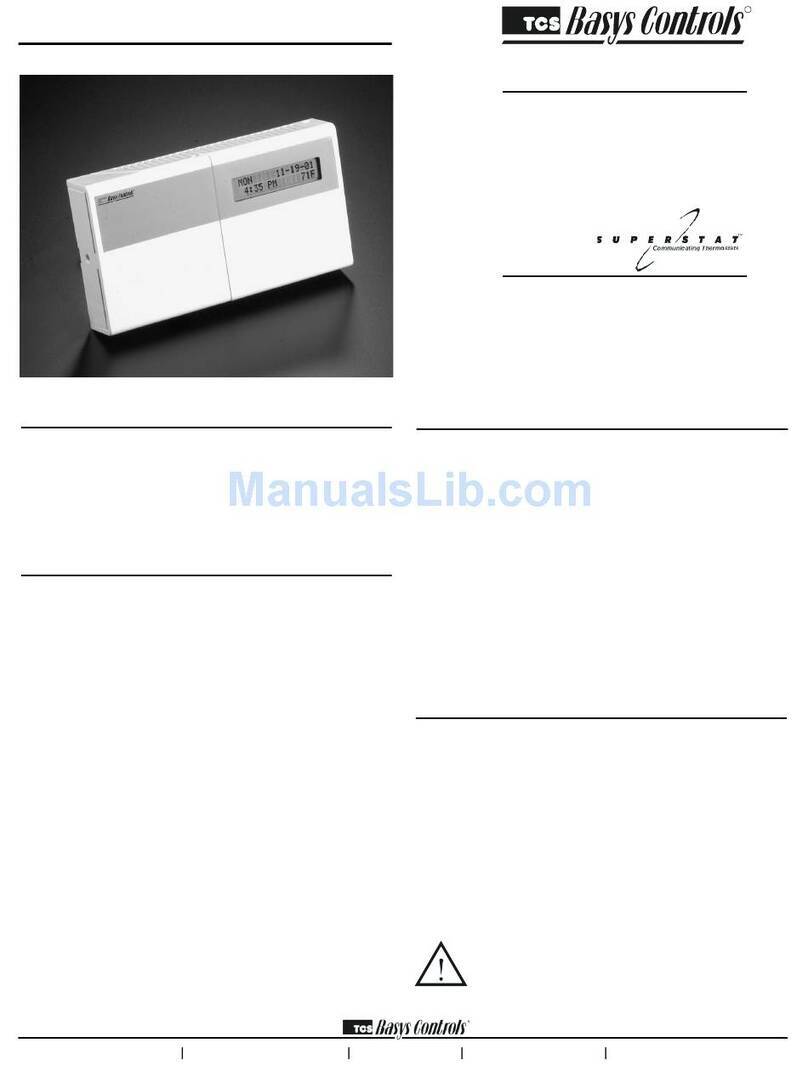
TCS Basys Controls
TCS Basys Controls SZ1017a User manual

TCS Basys Controls
TCS Basys Controls SZ1009 User manual
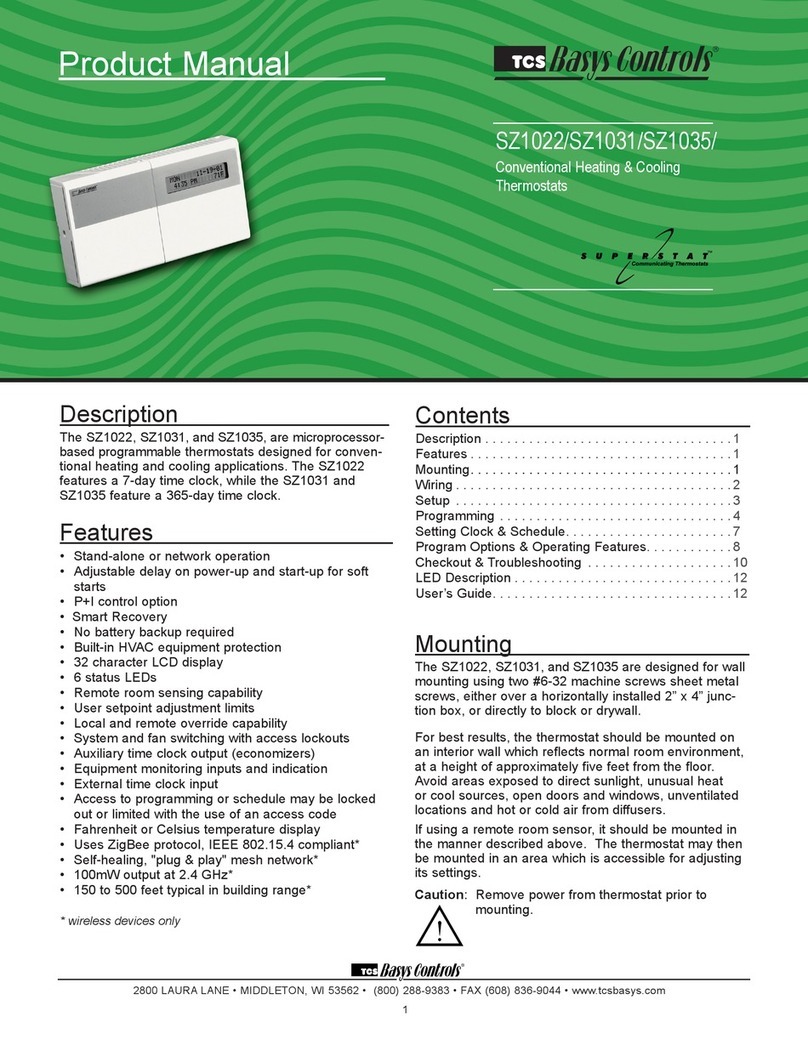
TCS Basys Controls
TCS Basys Controls SZ1022 User manual
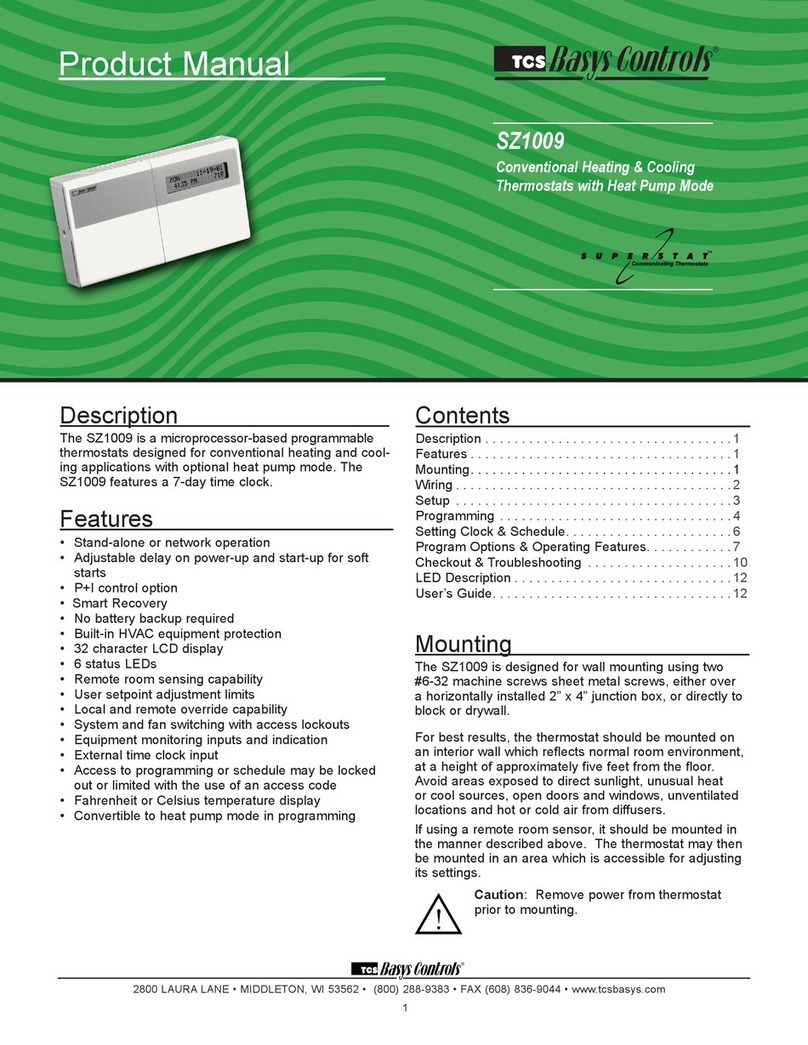
TCS Basys Controls
TCS Basys Controls SZ1009 User manual
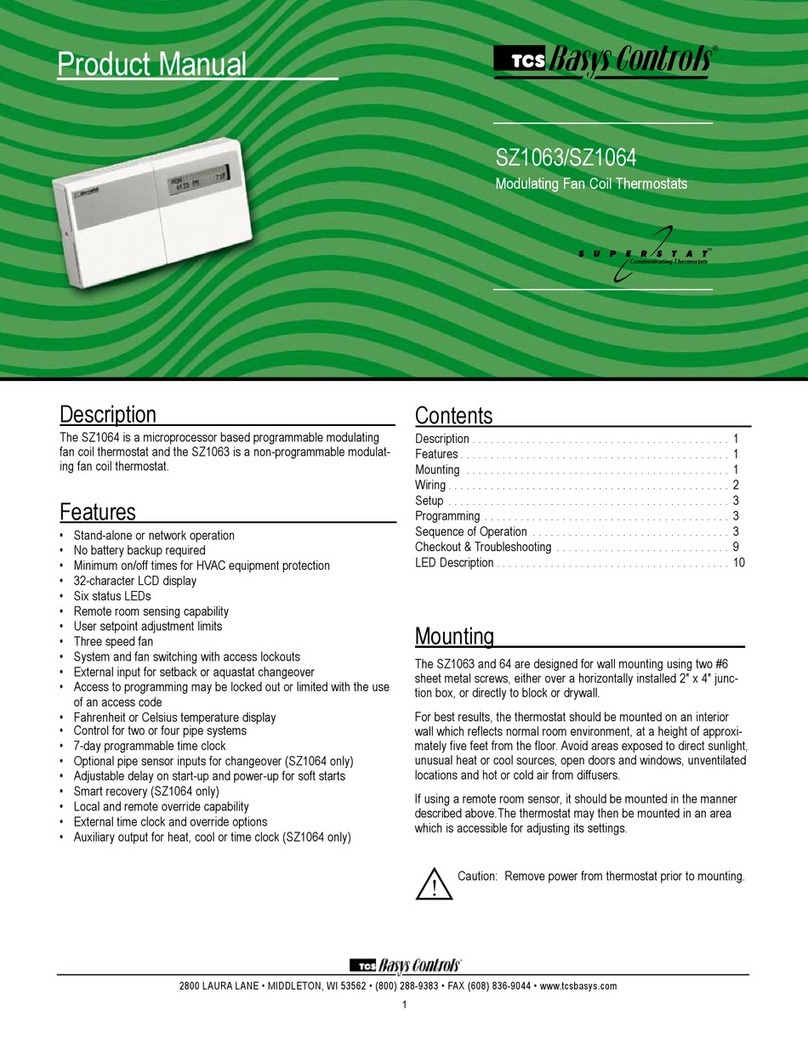
TCS Basys Controls
TCS Basys Controls SZ1063 User manual
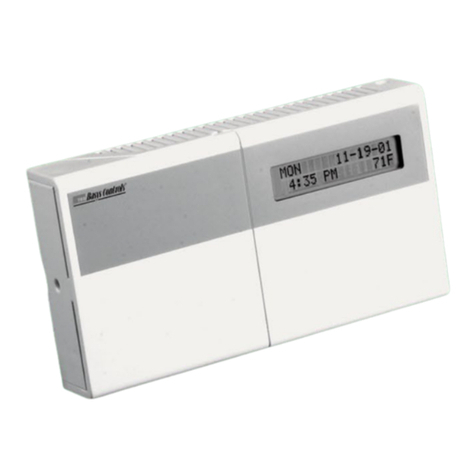
TCS Basys Controls
TCS Basys Controls SZ1041A User manual
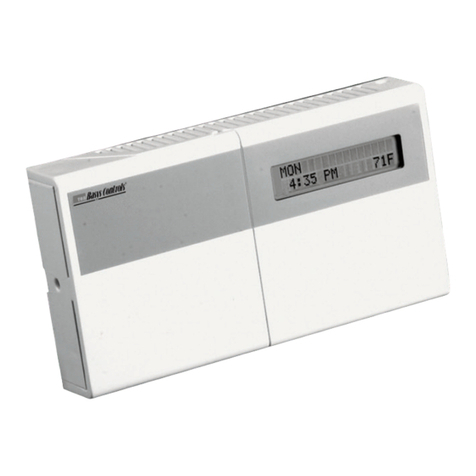
TCS Basys Controls
TCS Basys Controls SZ1061 User manual
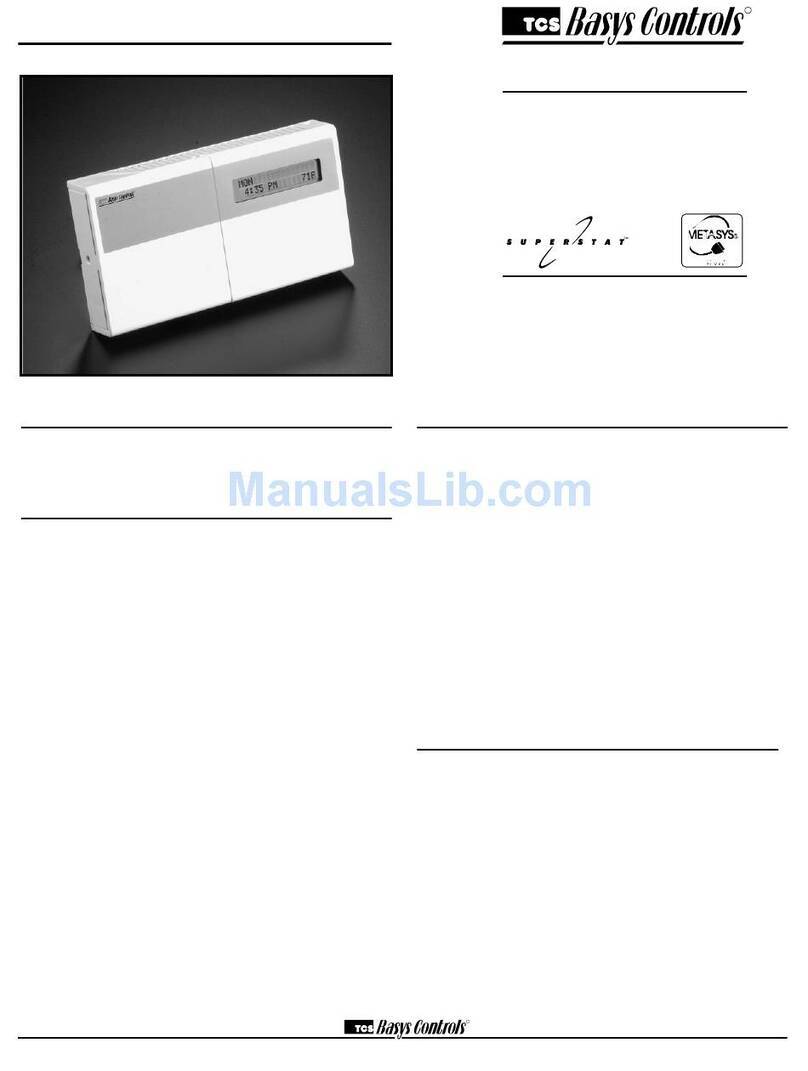
TCS Basys Controls
TCS Basys Controls SZ1017N User manual
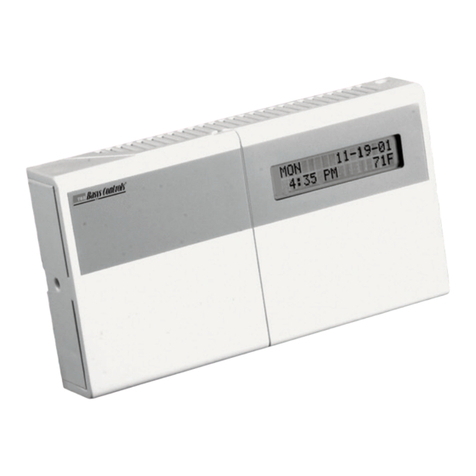
TCS Basys Controls
TCS Basys Controls SUPERSTAT SZW123 User manual

TCS Basys Controls
TCS Basys Controls SZ1041A User manual
